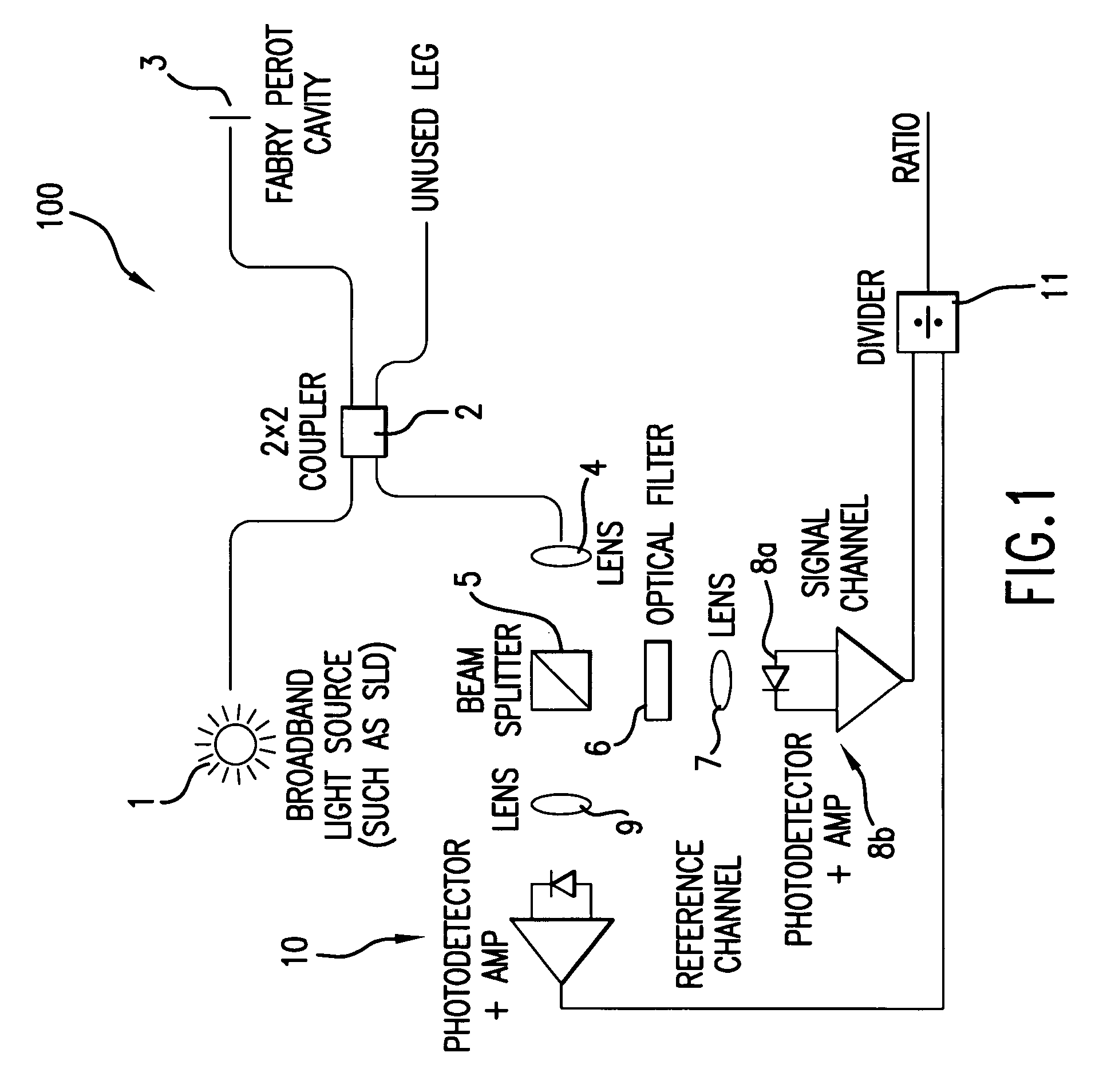Active Q-point stabilization for linear interferometric sensors
a technology of interferometric sensors and q-point stabilization, applied in the field of optical sensors, can solve the problems of complex processing systems for interferometric sensors, which must count these fringes, and the processing system of intensity-based sensors is typically more complex and therefore more expensiv
- Summary
- Abstract
- Description
- Claims
- Application Information
AI Technical Summary
Benefits of technology
Problems solved by technology
Method used
Image
Examples
Embodiment Construction
[0019]The present invention will be discussed with reference to preferred embodiments of linear interferometric sensor systems. Specific details are set forth in order to provide a thorough understanding of the present invention. The preferred embodiments discussed herein should not be understood to limit the invention. Furthermore, for ease of understanding, certain method steps are delineated as separate steps; however, these steps should not be construed as necessarily distinct nor order dependent in their performance.
[0020]The present invention is believed to be particularly useful in the context of a SCIIB sensor system and hence will be discussed primarily in that context herein. The invention should not be understood to be limited to a SCIIB sensor system but rather should be understood to be applicable to a wide variety of interferometric sensor systems.
[0021]A conventional SCIIB sensor configuration 100 is illustrated in FIG. 1. In the SCIIB sensor configuration 100, light ...
PUM
 Login to View More
Login to View More Abstract
Description
Claims
Application Information
 Login to View More
Login to View More - R&D
- Intellectual Property
- Life Sciences
- Materials
- Tech Scout
- Unparalleled Data Quality
- Higher Quality Content
- 60% Fewer Hallucinations
Browse by: Latest US Patents, China's latest patents, Technical Efficacy Thesaurus, Application Domain, Technology Topic, Popular Technical Reports.
© 2025 PatSnap. All rights reserved.Legal|Privacy policy|Modern Slavery Act Transparency Statement|Sitemap|About US| Contact US: help@patsnap.com



